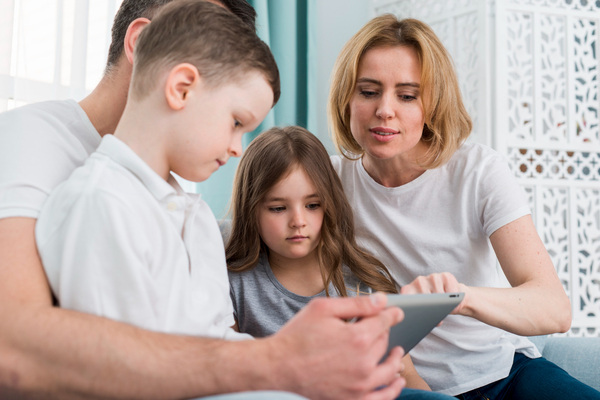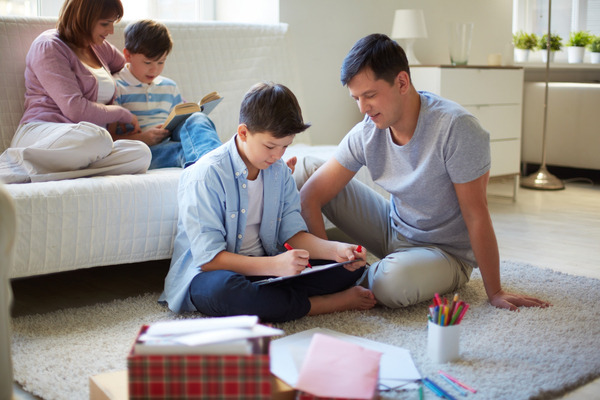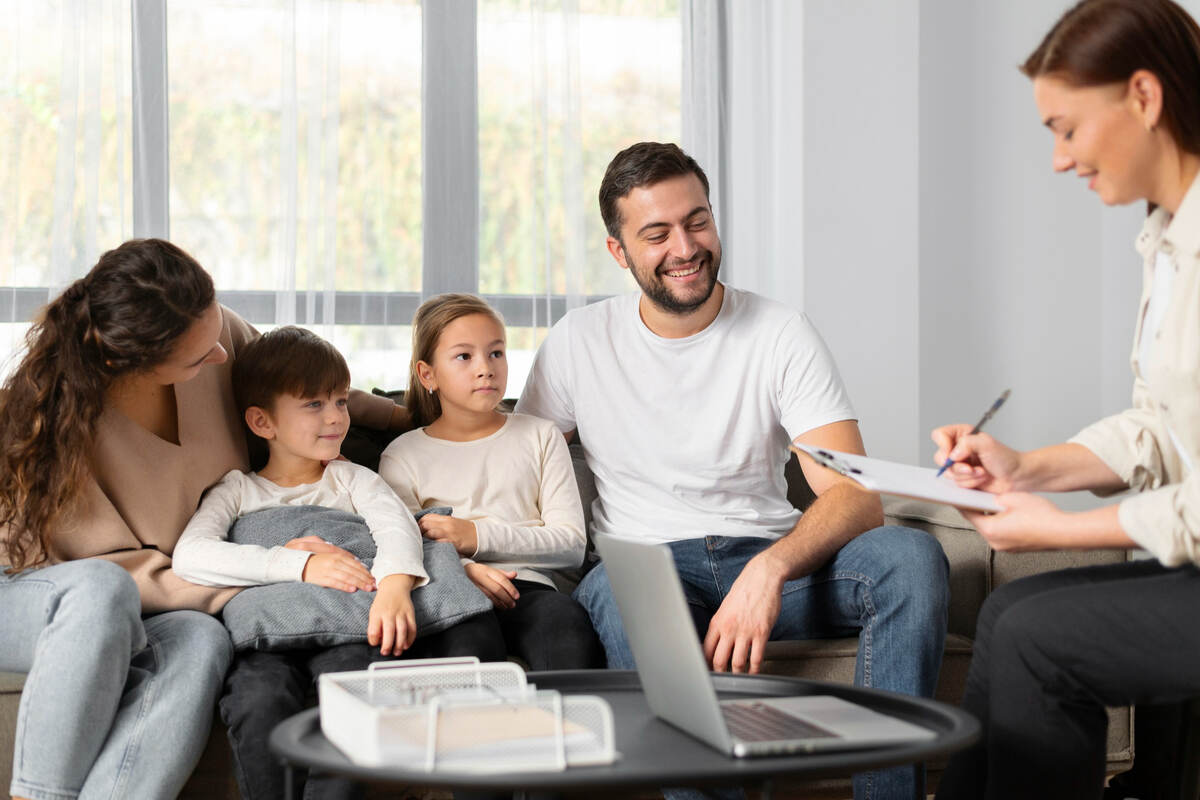Which Is Best For Your Family – Child Or Family Therapy?
Deciding to start therapy can feel overwhelming. A simple search reveals a wide range of therapy options available for individuals of all ages, from toddlers to older adults. As a parent seeking support, you may find yourself wondering: Where do I start? What do these different therapy approaches entail? Which one would best suit my child and our family?
The honest answer: it varies. The best approach depends on your child’s specific challenges, their age, and how ready and able they are to participate in therapy. It also depends on your family’s unique needs and how involved parents can be in the process. Speaking with a qualified mental health professional can help you find the right fit. To guide your decision, here are a few key points to consider.
Disclaimer: This article is for informational purposes only and does not replace professional medical or mental health advice. Always consult a qualified healthcare provider to determine the best treatment options for your child and family’s unique needs.

What are your primary concerns?
Effective Treatment Options for Managing Disruptive Behaviour in Children
If you’re looking for ways to help your child manage disruptive behaviours such as ADHD, difficulty following directions, tantrums, impulsivity, or anger management, a family-centred approach is often the most effective. These treatments actively involve parents and, in many cases, the child too. You might wonder, Why should I be involved in therapy if my child is the one having behavioural issues? The answer is simple—just like special education teachers, parents of children with unique behavioural needs benefit greatly from learning targeted skills that children are more likely to respond to positively.
For children aged up to 11, we often recommend Parent-Child Interaction Therapy (PCIT). This involves weekly sessions with both caregivers and the child, where clinicians guide parents in real-time as they practise relationship-building and discipline strategies with their child. These sessions can be held in our clinic or remotely through telehealth, offering flexibility for busy families.
- 12 to 24 months: PCIT with Toddlers (PCIT-T)
- 2 to 7 years: Standard PCIT
- 7 to 11 years: PCIT for Older Children
For children aged 12 and older, behavioural parent training is typically recommended. One proven method is Parent Management Training (PMT), which includes weekly sessions for parents only. During these sessions, clinicians teach and refine specific strategies to address behavioural challenges. Parents then report back on their progress, allowing for adjustments to techniques and ensuring continued improvement.
If challenges continue after completing these family-based therapies, we may recommend individual Cognitive Behaviour Therapy (CBT) for your child. CBT focuses on helping children understand their thoughts, emotions, and behaviours while learning practical coping skills to manage impulses and behaviour effectively. Parents may be involved occasionally to support their child’s progress.
Our goal is to provide tailored support that empowers both parents and children with tools to foster lasting, positive change.
How To Support Your Child’s Anxiety
If you’re looking for help with your child’s anxiety—such as trouble separating from loved ones, difficulty in social situations, managing constant worries, or handling obsessive thoughts and compulsive behaviours—individualised treatment is often the best option. In some cases, though, a more involved approach with parents or even parent-only therapy may be the most effective path.
For children aged 7 and older, we usually suggest individual Cognitive Behavioural Therapy (CBT). This typically includes weekly sessions where your child learns to understand their anxiety, develop coping strategies, and gradually face their fears through planned exposures. Parents are often part of this process, learning techniques to help their children navigate anxiety-provoking situations at home and in daily life. This collaborative approach helps build consistency and confidence in managing anxiety outside of therapy.
For children younger than 7, a mix of family and individual behavioural therapy is often recommended. Because younger kids are still developing the ability to think about their own thoughts and feelings, they need adult guidance to practice facing fears. This treatment usually involves parent training, hands-on coaching with the child, and some one-on-one sessions for the child. By actively involving parents, therapy becomes more effective and better suited to the child’s stage of development.

Supporting Children Through Emotional, Family, and Trauma-Related Challenges
Parents often seek therapeutic support for a wide range of reasons affecting their child and family’s well-being.
Sadness & Depression: For children aged 7 and up, Cognitive Behavioural Therapy (CBT) can help them understand their emotions and develop coping strategies to manage stress and regulate feelings. This typically involves one-on-one sessions but may also include parents to strengthen family support at home and in daily life. For younger children under 7, a mix of family-based and individual therapy is often most effective in building these emotional skills. Providing children with the right tools early on can promote long-term resilience and emotional balance.
Divorce & Family Conflict: Therapy recommendations depend on your family’s specific needs. If your child shows signs of distress like anxiety, sadness, or disruptive behaviour, we may suggest the above interventions. For children needing a safe space to talk about family stress, individual therapy can help them build coping skills for handling these challenges in a healthy way. Family therapy may be more suitable when the focus is on improving communication, setting boundaries, and resolving hidden tensions. Sessions typically include parents and children, with tailored approaches to strengthen family dynamics and support harmony at home.
Trauma & Grief: When a child experiences trauma or loss, a combined approach is often most helpful. Trauma-focused CBT (TF-CBT) is the recommended therapy for children and adolescents affected by trauma. This involves individual sessions with the child, along with parent-only and joint sessions where possible. TF-CBT helps children process trauma safely while equipping parents to support their child’s recovery. Early intervention in these cases can be crucial for emotional healing and long-term mental health.

When Your Child Can’t Start Treatment: What Are Your Options?
Sometimes, the standard treatment plan we’ve outlined doesn’t fully align with what a family needs. In these cases, we may recommend a different, more tailored approach.
For children and teens who are highly anxious or resistant and can’t engage safely in therapy, a parent-only strategy may be more effective. One proven method is Supportive Parenting for Anxious Childhood Emotions (SPACE Program), where parents work directly with a therapist to change how they respond to their child’s anxiety. The goal is to reduce how much parents accommodate avoidant behaviours, which helps the child build independence and manage stress over time. This method is research-backed and can empower parents to lead positive change.
If weekly sessions aren’t manageable for parents or caregivers, we can explore individual therapy options. However, we strongly believe that involving parents in any form of treatment makes a significant difference, regardless of the issue. Parents are often the key to progress, and we aim to support families in maximising their involvement. For instance, if one parent can’t attend weekly Parent-Child Interaction Therapy (PCIT), we’ll work consistently with the available caregiver and find ways—such as telehealth—to include the other parent when possible.
No matter your child’s age, challenges, or family situation, you shouldn’t feel like you have to decide alone. As clinicians, we’ll help you understand your treatment choices, including the pros and cons, and share our recommendations based on your unique needs. Your input is crucial to finding the right fit, so feel free to ask questions and share any concerns. If our suggestion doesn’t feel right, we’ll collaborate with you to create a plan that works best for your family.
How Parent-Led Therapy Can Drive Long-Term Change
Even when a child is unable or unwilling to participate directly in therapy, parents can still be a powerful force for change. Parent-led therapy models like SPACE, Parent Management Training (PMT), and PCIT empower caregivers with practical strategies to manage behavioural and emotional challenges at home. With guidance from a therapist, parents can create a consistent, supportive environment that encourages growth and resilience in their child. Research shows that parent-only interventions not only help reduce symptoms but also build stronger parent-child relationships. These approaches are especially helpful when therapy access is limited or when children need more time to feel ready for direct participation.
Tailoring Treatment Plans to Fit Your Family’s Schedule and Needs
We understand that every family’s schedule and capacity to engage in treatment varies. That’s why we offer flexible options, including telehealth sessions, parent-only meetings, and tailored therapy schedules. If traditional weekly sessions aren’t feasible, we’ll collaborate with you to explore alternatives—such as bi-weekly appointments or shorter, focused interventions. The goal is to make support accessible without adding stress to your routine. Open communication about your family’s needs allows us to co-create a plan that’s realistic, sustainable, and aligned with your child’s well-being.
Conclusion
Choosing between child or family therapy can feel like a big decision, but you don’t have to navigate it alone. The best approach depends on your child’s age, challenges, and your family’s ability to engage in the process. Whether it’s individual therapy, parent-led interventions, or a mix of both, support is available and adaptable to your needs. Our goal is to help families feel empowered with clear guidance, flexible options, and evidence-based strategies that lead to meaningful progress. If you’re unsure where to begin, start by having a conversation with a qualified therapist. Together, we can develop a personalised plan that supports your child’s mental health and strengthens your family’s well-being—both now and in the future.
Disclaimer: This article is for informational purposes only and does not replace professional medical or mental health advice. Always consult a qualified healthcare provider to determine the best treatment options for your child and family’s unique needs.
FAQs
1. How can I tell if my child needs individual therapy or family therapy?
Start by considering your child’s age, their specific challenges, and how involved your family can be. A mental health professional will help you assess the situation and recommend the best option for your child and family.
2. Can therapy still work if my child refuses to participate?
Yes. You can still make progress through parent-only or family therapy. By learning effective strategies, you can support your child at home and help them feel more ready to engage over time.
3. Is individual therapy more effective than family therapy?
Not always. For behaviour issues, involving the family often brings faster results. For emotional concerns like anxiety or trauma, individual therapy works well, especially when you support your child’s progress outside of sessions.
4. Can we change therapy approaches if needed?
Absolutely. You can switch between therapy types as your child’s needs or your family’s situation changes. Therapists regularly adjust treatment plans to ensure the best fit.
5. What if we can’t attend weekly therapy sessions?
You still have options. Many providers offer telehealth, bi-weekly sessions, or parent-led approaches. We’ll work with your schedule to make therapy accessible and effective.
Users Also Say:
What Do Other Families Think About Choosing Between Child and Family Therapy?
weirdlyc*******
Family therapy focuses on resolving conflict within the family, improving communication, and repairing strained relationships. It provides a space where all members can be heard and work toward healthier dynamics. Individual therapy addresses personal challenges like trauma, anger, and emotional regulation. It equips individuals with coping strategies that support long-term stability across various life situations. While family therapy can encourage mutual understanding, individual therapy offers a private space for self-growth without external pressure. It helps your child develop lifelong skills for managing stress, navigating relationships, and maintaining emotional balance—not just at home, but in all areas of life.

